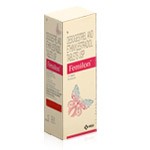Understanding PMS


Premenstrual Syndrome (PMS) is a common and often disruptive condition that affects many women of reproductive age in the days leading up to menstruation. While for some it may be a mild inconvenience, for others it can be a significant physical and emotional challenge that interferes with daily life, work, relationships, and overall well-being. Despite its prevalence, PMS is still frequently misunderstood or under-addressed. This article provides a comprehensive look into what PMS is, how it differs from more severe conditions like PMDD, how it can be managed or reduced, and the role of medications like Mircette in its treatment.
What Is Premenstrual Syndrome?
Premenstrual Syndrome is a combination of physical, emotional, and behavioral symptoms that typically occur 1–2 weeks before the onset of menstruation and resolve shortly after the period begins. It is estimated that up to 75% of menstruating women experience some form of PMS, though the severity and nature of symptoms can vary significantly from one individual to another.
PMS is associated with the luteal phase of the menstrual cycle, which follows ovulation and ends when menstruation begins. During this time, the body experiences shifts in hormone levels, particularly estrogen and progesterone, which are believed to trigger the array of symptoms associated with the condition.
What Are Four Symptoms of Premenstrual Syndrome?
PMS symptoms are diverse and can affect both mind and body. However, some of the most commonly reported symptoms include:
- Mood Swings – Emotional sensitivity is one of the hallmark features of PMS. Women may experience irritability, sadness, or even episodes of crying without clear provocation. Anxiety and a reduced ability to cope with stress are also frequently noted.
- Breast Tenderness – Hormonal changes can lead to swelling and pain in the breasts, making them sensitive to touch or pressure. This symptom often resolves once menstruation begins.
- Fatigue – Many women report a noticeable drop in energy levels, even with sufficient sleep. This can affect concentration, motivation, and performance in daily tasks.
- Bloating – A sensation of fullness or swelling in the abdomen is common, often due to fluid retention and changes in gastrointestinal activity during the luteal phase.
Other symptoms may include headaches, changes in libido, sleep disturbances, food cravings, and skin problems like acne. The intensity of these symptoms determines how much they impact daily life and whether treatment is warranted.
What Is the Cause of Premenstrual Syndrome?
The exact cause of PMS is not entirely understood, but hormonal fluctuations during the menstrual cycle are considered the primary drivers. In particular, the rise and fall of estrogen and progesterone after ovulation are thought to interact with brain chemicals such as serotonin, a neurotransmitter that regulates mood, sleep, and appetite.
Some women may be more sensitive to these hormonal changes, which can explain why PMS affects individuals differently. Factors that may contribute to or worsen PMS symptoms include genetic predisposition, stress, lack of exercise, poor diet, and underlying mental health conditions such as depression or anxiety.
There is also a psychological dimension to PMS: women with a history of trauma, mood disorders, or chronic stress may be more susceptible to emotional symptoms. Additionally, deficiencies in certain nutrients such as calcium, magnesium, or vitamin B6 have been suggested to exacerbate PMS, though more research is needed to confirm these links.
How to Reduce Premenstrual Syndrome?
While PMS cannot be entirely eliminated in most cases, its severity can often be significantly reduced through a combination of lifestyle changes, stress management, and medical treatment. The first step is often non-pharmacological—focusing on diet, exercise, and daily habits.
Regular physical activity has been shown to help regulate mood and improve sleep, while also reducing bloating and fatigue. Aerobic exercises such as brisk walking, swimming, or cycling for at least 30 minutes on most days can help mitigate both physical and emotional symptoms.
Diet also plays a role. A balanced intake of complex carbohydrates, lean proteins, and healthy fats while minimizing salt, sugar, and caffeine can help maintain more stable energy and mood. Smaller, more frequent meals may reduce bloating and food cravings. Avoiding alcohol and staying hydrated is also beneficial.
Stress reduction techniques such as yoga, meditation, breathing exercises, or even talking with a therapist can be powerful tools for emotional management during the premenstrual phase.
In cases where lifestyle modifications are not sufficient, over-the-counter pain relievers such as ibuprofen can address physical symptoms like cramps or headaches. Hormonal treatments, including oral contraceptives, may also be prescribed to regulate or suppress ovulation, which helps stabilize hormone levels.
What Is the Difference Between PMS and PMDD?
While PMS is common and typically manageable, Premenstrual Dysphoric Disorder (PMDD) is a much more severe form of the condition. PMDD affects a smaller percentage of women — around 3–8% — but it can be profoundly disruptive to daily life and emotional functioning.
The emotional and psychological symptoms of PMDD are much more intense than those of PMS. Women with PMDD may experience extreme irritability, severe depression, anger, or anxiety, sometimes leading to suicidal thoughts or significant conflict in relationships. These symptoms usually resolve with the start of menstruation, similar to PMS, but their severity requires more targeted medical treatment.
While PMS may cause mood changes, PMDD is defined by marked impairment in functioning. Diagnosis of PMDD involves tracking symptoms for at least two consecutive cycles and meeting specific criteria outlined in the DSM-5 (Diagnostic and Statistical Manual of Mental Disorders).
Treatment for PMDD often includes selective serotonin reuptake inhibitors (SSRIs), hormonal contraceptives, or even GnRH agonists in severe cases. Cognitive behavioral therapy (CBT) can also play a helpful role in managing the psychological aspects of the disorder.
The Role of Mircette in the Treatment of PMS
Mircette is a combination oral contraceptive pill that contains ethinyl estradiol (a form of estrogen) and desogestrel (a synthetic progestin). It is primarily used as a birth control method but has also proven effective in managing symptoms of PMS and PMDD in many women.
Mircette works by regulating hormone levels throughout the menstrual cycle, preventing the sharp fluctuations in estrogen and progesterone that are believed to contribute to PMS symptoms. By suppressing ovulation and stabilizing the hormonal environment, Mircette can reduce both physical and emotional symptoms, including bloating, breast tenderness, irritability, and mood swings.
What distinguishes Mircette from some other oral contraceptives is its unique dosing regimen. It includes a lower estrogen dose during the placebo phase, which helps maintain hormonal consistency and may prevent the dramatic drop in estrogen that some women experience during the inactive pill days. This smoother hormonal transition is particularly beneficial for women prone to mood-related PMS symptoms.
Clinical studies and real-world experiences support the use of combination oral contraceptives like Mircette as a first-line treatment option for moderate to severe PMS, especially when other methods have failed or when contraception is also desired. However, it is important to note that hormonal contraceptives are not suitable for everyone. Women who smoke over the age of 35, or those with certain cardiovascular risks, may need alternative therapies. As with all medications, the benefits and risks should be carefully discussed with a healthcare provider.
Side effects of Mircette are generally mild and may include nausea, breast tenderness, or slight changes in menstrual flow. In most cases, these symptoms subside after the first few months of use.
Conclusion
Premenstrual Syndrome is a multifaceted condition that reflects the body’s complex hormonal and neurological interplay. For many women, it is a temporary discomfort, but for others, it represents a serious disruption to emotional and physical well-being. Understanding its symptoms, causes, and the distinction between PMS and PMDD is essential to managing its impact.
Lifestyle changes remain the foundation of PMS management, but when symptoms are moderate to severe, medical interventions such as hormonal therapy can make a meaningful difference. Mircette, by offering hormonal stability, provides a reliable and effective treatment for many women struggling with PMS and its emotional and physical toll.
The journey to relief often involves trial and adjustment, but with informed care, support, and the right combination of strategies, women can regain control over their bodies and lives—even during the most hormonally turbulent days of the month.
Medically Reviewed by Dr. Rabeea Aboufakher, MD
(Updated at Jun 30 / 2025)
